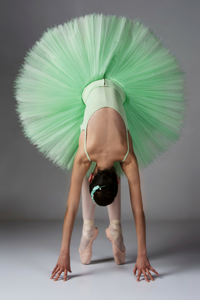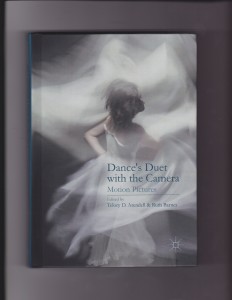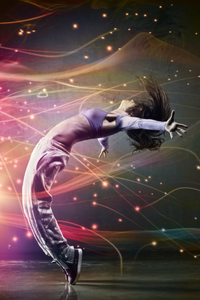 I may think the Denver Art Museum’s “Summer of Dance” is splendid, but the Denver Post’s critic disagrees. He writes, “As a theme, ‘dance’ is, frankly, thin, a fringe topic that’s wholly without risk and lacks the kind of gravitas that a serious museum has the skill and resources to tackle.” Other phrases are similarly dismissive: “escapism,” “light touch,” “fun,” and finally, in response to the display of Anna Pavlova’s tutu – “This year, its feathery fluffiness feels like a metaphor for the whole lineup at DAM.”
I may think the Denver Art Museum’s “Summer of Dance” is splendid, but the Denver Post’s critic disagrees. He writes, “As a theme, ‘dance’ is, frankly, thin, a fringe topic that’s wholly without risk and lacks the kind of gravitas that a serious museum has the skill and resources to tackle.” Other phrases are similarly dismissive: “escapism,” “light touch,” “fun,” and finally, in response to the display of Anna Pavlova’s tutu – “This year, its feathery fluffiness feels like a metaphor for the whole lineup at DAM.”
As a dancer, it is difficult for me to see this merely as a criticism of the museum’s exhibitions – it seems to be a denunciation of dance itself. In this critic’s eyes, at least, dance is ornamental, trivial, light weight — an art that lacks “gravitas.” While I may disagree, I fear this writer’s views are reflective of more general public perceptions of the nature and value of dance.
Over a hundred years ago, when the painter Rudolf Laban decided to pursue dance, he confessed that he felt he had set his heart on “the most despised profession in the world.” Dance may no longer be regarded as a profane or disreputable enterprise, but its profound value, its “gravitas,” has yet to be appreciated by art critics and the general American public.
The United States is not a dancing culture. Yes, we have popular dance, theatrical dance, even competitive dance on television. But most people do not participate in dancing on any regular basis. In my view, dance is meant to be done. Its value and meaning are only revealed through the experience of doing it. Seeing is nice, but dance should not be merely a theatrical spectacle and certainly not a competitive sport.
Until we find a way to embed dance in the lives of everyday people, dance will continue to be dissed and dismissed as a fringe topic – feathery, fluffy, fun — and largely without serious value.

 My home town’s major art museum is hosting four separate exhibits on dance this summer.
My home town’s major art museum is hosting four separate exhibits on dance this summer.  I am happy to announce the publication of Dance’s Duet with the Camera. This collection of essays, edited by Telory D. Arendell and Ruth Barnes and published by Palgrave Macmillan, “takes on the difficult task of verbalizing how the live aspects of present, sweaty, energy-driven dancers might collaborate with the more staid, focused, and digitally manipulated forms of either
I am happy to announce the publication of Dance’s Duet with the Camera. This collection of essays, edited by Telory D. Arendell and Ruth Barnes and published by Palgrave Macmillan, “takes on the difficult task of verbalizing how the live aspects of present, sweaty, energy-driven dancers might collaborate with the more staid, focused, and digitally manipulated forms of either  “Why are we learning this?” Anyone who has ever taught Space Harmony will have heard this question from students. In fact, many Certified Movement Analysts have themselves struggled with this part of Laban’s work. But the study of
“Why are we learning this?” Anyone who has ever taught Space Harmony will have heard this question from students. In fact, many Certified Movement Analysts have themselves struggled with this part of Laban’s work. But the study of  by Kathie Debenham
by Kathie Debenham by Laurie Cameron
by Laurie Cameron In the Vaccination Theory of Education, students are led to believe that once they have “had” a subject, they are immune to it and need not take it again.
In the Vaccination Theory of Education, students are led to believe that once they have “had” a subject, they are immune to it and need not take it again. by Nancy Beardall
by Nancy Beardall The June gathering in Montreal of American, Canadian, and French movement analysts provided many opportunities for moving, observing, and talking together. This was a daunting enterprise, for not only were participants navigating between two systems of movement analysis but also two languages – English and French.
The June gathering in Montreal of American, Canadian, and French movement analysts provided many opportunities for moving, observing, and talking together. This was a daunting enterprise, for not only were participants navigating between two systems of movement analysis but also two languages – English and French. Like many movement analysts, I’ve always thought that choreutics was synonymous with space harmony. But now I see that choreutics is not just about space. For Laban, choreutics is the whole enchilada. It is body, effort, shape, and space – movement as an integration of the physical, psychological, and spiritual.
Like many movement analysts, I’ve always thought that choreutics was synonymous with space harmony. But now I see that choreutics is not just about space. For Laban, choreutics is the whole enchilada. It is body, effort, shape, and space – movement as an integration of the physical, psychological, and spiritual.